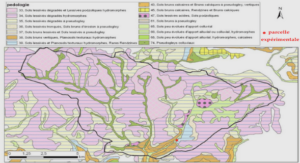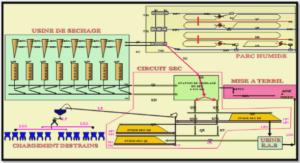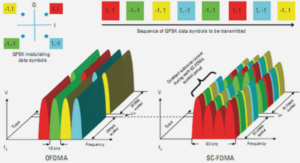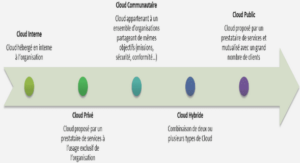DISTRIBUTION AND DEVELOPMENT OF EPIFAUNA ASSOCIATED WITH BLUE MUSSEL CUL TURE
BUT ET OBJECfIFS
Le but de cette étude est de déterminer l’importance du développement de l’ épifaune sur les structures d’ élevages de moules dans le golfe du Saint-Laurent et d’évaluer la connectivité entre les différents sites à l’ étude. Nous avons mis l’emphase sur la macrofaune sessile ayant un stade larvaire pélagique. Le premier objectif vise à déterminer la dynamique temporelle de développement de l’épifaune sur les boudins de moules. Dans un premier temps, nous avons identifié à l’ espèce toute la macrofaune sessile retrouvée sur les boudins de moules en juillet, septembre et novembre aux sites de Belles-Amours, St.Mary’s Bay, Miramichi, Lamèque, Havre auxmaisons et Tracadie Bay (Figure 1). Dans un second temps, nous avons mesuré la biomasse et le nombre d’individus de chaque espèce de la macrofaune sessile sur certains sites et à certaines dates sélectionnées, soient les sites de Belles-Amours, St.Mary’s Bayet Miramichi, en juillet et novembre 2002. Cette étude s’intéresse par ailleurs à l’effet de la profondeur sur la biomasse et la richesse spécifique présente sur les boudins de moules.
Finalement, le dernier objectif vise l’exploration de techniques moléculaires permettant d ‘ évaluer le potentiel de dispersion naturelle des espèces à l’intérieur du golfe du SaintLaurent. Étant donné que Mytilus edulis se retrouve sur tous les sites à l’étude, c’ est l’espèce qui a été utilisée pour l’estimation du flux génique. Pour y arriver, il a fallu d’ abord identifier chaque moule à son espèce (M. edulis et M. trossulus), puis tester et optimiser les microsatellites développés pour le complexe Mytilus (Presa et al. 2002) sur les populations de M. edulis retrouvées dans le golfe du Saint-Laurent.
DISTRIBUTION AND DEVELOPMENT OF EPIFAUNA ASSOCIATED WITH BLUE MUSSEL CULTURE AND GENE FLOW IN MITILUS EDULIS FROM THE GULF OF ST -LAWRENCE.
1 Département de Biologie, de chimie et des sciences de la santé, Université du Québec à Rimouski, 300 allée des Ursulines, Rimouski, Québec, Canada, G5L 3Al. 2 ISMER, Université du Québec à Rimouski, 310 allée des Ursulines, Rimouski, Québec, Canada, G5L 3A 1. 3 Département de Biologie, Université de Moncton, Moncton, Nouveau-Brunswick, Canada, ElA 3E9.
4 Département of Fisheries and Oceans Canada, Science Branch Gulf Fisheries Centre, Moncton, Nouveau-Brunswick, Canada, El C 9B6. ABSTRACf This aims to study the epifaunic species associated with mussel farming industry. Biomass and presence of these species vary according to specific biogeographic areas. The connectivity between biogeographic regions depends in part on dispersal potential of species as weil as on hydrographic features. The goal of this study was to quantify the development of epifauna on farming mussel structure in the Gulf of St. Lawrence and to estimate dispersal potential between the studied sites. The emphasis has been put on sessile macrofauna with a pelagic larval stage. The studied sites were Belle-Amours (Quebec), Havre-aux-Maisons (Quebec), Tracadie (Prince-Edward Island), St. Mary’s Bay (Prince-Edward Island), Miramichi (New-Brunswick) and Lameque (New-Brunswick). In order to determine the temporal dynamics on epifauna settIement, we sampled in July and November and estimated species biomass for each sampling time. Gene flow was measured using microsatellites on Mytilus edulis. Fourteen species were found on mus sel socks. Only the seed mussel (Mytilus edulis) was found everywhere, whereas Tubularia larynx, Balanus crenatus and Crepidula fornicata were the other most commonly found species. Generally, we found a greater and more diverse biomass in November. The highest biodiversity was found at St. Mary’s Bay (Shannon ‘s index of 0.752). The sites with the greatest biodiversity were the ones where aquaculture has been intensively practiced for the longest time. Only two of the seven microsatellites loci were variable in our populations. The global FST value was 0.0066 suggesting high gene flow among sites. Microsatellites analyses on M. edulis showed a deficit of heterozygotes for the locus mgfl-6 with FIS value ranging from 0.256 to 0.440 whereas FIS for the locus mgfl-5 is from 0.051 to 0.310. Hardy-Weinberg expectation was rejected for one site at the locus mgfl-5 and at ail the sites at mgfl-6. The absence of genetic structure for the mussels of the Gulf of St. Lawrence needs to be confirmed with a higher number of hypervariable markers.
INTRODUCTION
The structures used for suspended mussel aquaculture provide a new solid substrate for the settlement of sessile speCies with a pelagie larval stage. The study of these structures is important for aquaculture in order to understand the impact of epifauna on farmed mussel production as weIl as at the fundamentallevel in order to determine the connectivity between sites and biodiversity. It is also important to know the distribution of invasive species in order to avoid transferring them along with seed mussels among aquaculture sites. The knowledge of epifaunic communities in the St. Lawrence estuary was assessed by studies of Ardisson et al. (1990) and Ardisson and Bourget (1992, 1997) using navigation buoys as weIl as an inventory at Tracadie Bay by Leblanc et al (2003a) on mussel socks. However, there have been no studies performed in the Gulf area, where aquaculture is commonly practiced. The most common group of organisms found on the mussel farming structures are ascidians, hydroids, bryozoans, polychaetes, barnacles and bivalves, including mussels (Leblanc 2003 and references therein). Macrofauna found on the structures can be in competition for space and food or predatory towards farming mussels. The presence of epifauna and a high density of mussels could increase intra and interspecific competition and have a negative effect on mussel growth (Fréchette et al. 1992) but see Leblanc et al. (2003b). Several studies have examined the succession of epifaunic communities.
They generally showed that the first colonizing species are the fast growing ones, such as hydroids, barnacles and sorne ascidians and these species in turn set the stage for the settlement of bivalves and other species with slower growth. Succession can be defined as a directional sequence of change, resulting in a distinct pattern of change in the abundance and composition of species in the assemblages. Conversely, seasonal progression is characterized by the abundance of competent larvae and varies according to the reproductive cycles. If succession is the principal mechanism, each site should follow the same sequence of species settlement.
Epifaunic communities change along the St. Lawrence River. Ardisson and Bourget (1992) showed a correlation between particular hydrographic structures and discontinuities in species assemblages. In general, the communities vary in function of environmental (e.g. Ardisson and Bourget 1997; Callaway et al. 2002; Bourget et al. 2003; Khalaman 2001) genetic (e.g. Koehn et al. 1976; Koehn and Bayne 1989) and biological factors (e.g. Mann 1988; Crisp 1978; Sutherland 1990; Possingham and Roughgarden 1990; Edgar and Barrett 2002) and each of these factors influence biomass, specific richness and communities structure. Although biomass can be an indicator of dispersion, connectivity between sites requires a more precise estimator. The planktonic larval stage allows colonization of new sites and movement can be estimate by genetic markers between sites (Scheltema and William 1983). The lifespan of invertebrate larvae plays a crucial role in the dispersion amplitude and it shapes the genetic structure of populations (Crisp 1978; Hedgecock 1981; Ruzzante et al. 1999; Pal umbi 1995; Bohonak 1999). The direct measurement of gene flow is, however, generally impossible (Slatkin 1994) especially for marine organisms, since larvae can spend several weeks in plankton before becoming competent to settle. Genetic markers used to estimate the distance covered during larval dispersion reveals a positive correlation between dispersal capacity (measured by the larval lifespan) and the real distance traveled (Bohonak 1999). Nevertheless, the real distances traveled by larvae are sometimes lower th an those suggested by the life cycle, meaning that the relationship between the duration of dispersion and gene flow is not always clear. Sorne studies show strong population structure for species with a pelagic larval stage (Hedgecock 1986; Hillbish 1996; Zane et al. 2000). In sorne cases, this structure can be attributed to local retenti on of planktonic larvae (Jones et al. 1999; Swearer et al. 1999; Barber et al. 2000) or to hydrographic particularities, preventing or modifying dispersion (Hohenlohe 2004; Sotka et al. 2004). These differences can also be explained by selection rather than a weak gene flow. Recent studies have shown the importance of selection to explain the maintenance of diversity between populations and adaptation to local conditions (Dufresne et al. 2002; Luttikhuizen et al. 2003; Maltagliati et al. 2004).
|
Table des matières
RÉSUMÉ
TABLE DES MATIÈRES
LISTE DES T ABLE AUX
LISTE DES FIGURES
LISTE DES ANNEXES
INTRODUCTION GÉNÉRALE
MYTIUCULTURE
LA MOULE BLEUE
ÉPIFAUNE
DISTRIBUTION SPATIALE
BUT ET OBJECTIFS
CHAPITRE 1 DISTRIBUTION AND DEVELOPMENT OF EPIFAUNA ASSOCIATED WITH BLUE MUSSEL CUL TURE AND GENE FLOW IN MYTILUS EDULIS FROM THE GULF OF ST -LAWRENCE.
ABSTRACT
INTRODUCTION
MATERIALS AND METHODS
STUDY AREA
EPIFAUNA SAMPLING
EPIFAUNA DATA ANALYSIS
SEED MUSSELS SAMPLING
GENETIC ANALYSIS
GENETIC DATA ANALYSES
RESULTS
EPIFAUNA
GENETICS
DISCUSSION
DISTRIBUTION OF SPECIES
COMPOSITION AND SUCCESSION
THE BLUE MUSSEL
GENE FLOW H:::TWEEN STUDIED SITES
AKNOWLEDGMENTS
CONCLUSION GÉNÉRALE
BIBLIOGRAPIDE
ANNEXE
![]() Télécharger le rapport complet
Télécharger le rapport complet





